George VI Ice Shelf: lakes and pondsOur field area is characterized by a large "epi-shelf" lake, Ablation Lake. An epishelf lake is constrained by floating ice of the ice shelf, so it has a hydraulic connection with the open sea. The lake is thus saline, and rises and falls with the tides. The ice shelf is also well known for its abundant supraglacial (surface) lakes. By late summer parts of the ice shelf are covered by up to 40% of water in late summer, mostly in the form of elongated lakes parallel to ice structures. These are especially well seen in satellite imagery. These lakes and the surrounding saturated snow restrict fieldwork to spring and early summer. During our visit in November and early December (early summer), lakes were mostly frozen adjacent to Alexander Island, but by late November they were beginning to thaw. Some lakes had drained the previous summer, leaving stranded ice blocks. |
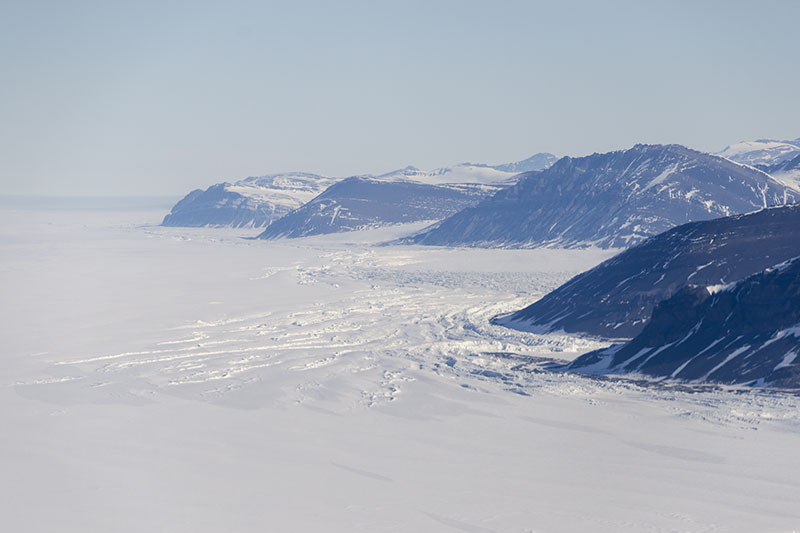 The Alexander Island margin of George VI Ice Shelf from the air, looking south. Ablation Lake is in the large embayment centre-right. | 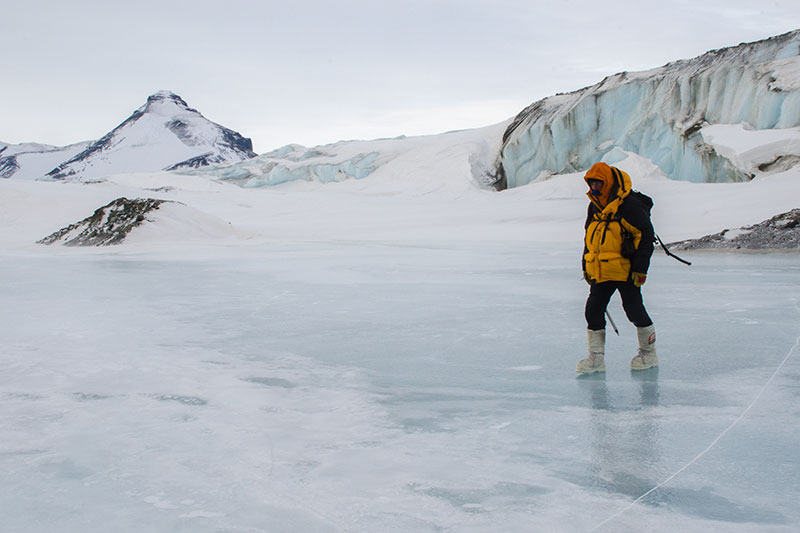 Pond formed between the ice-shelf moraine and the adjacent hill-slopes near Ablation Lake. | 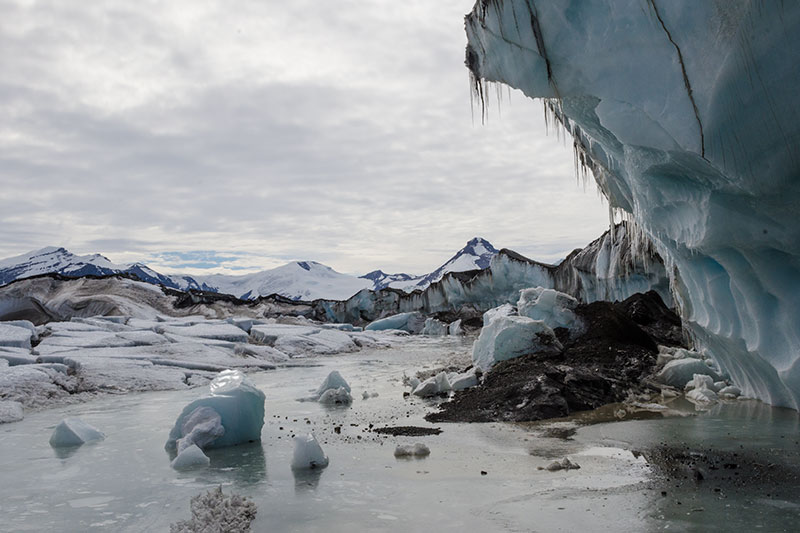 Lake formed within the ice-shelf moraine near Ablation Lake, with ice blocks fallen from the ice cliff. | 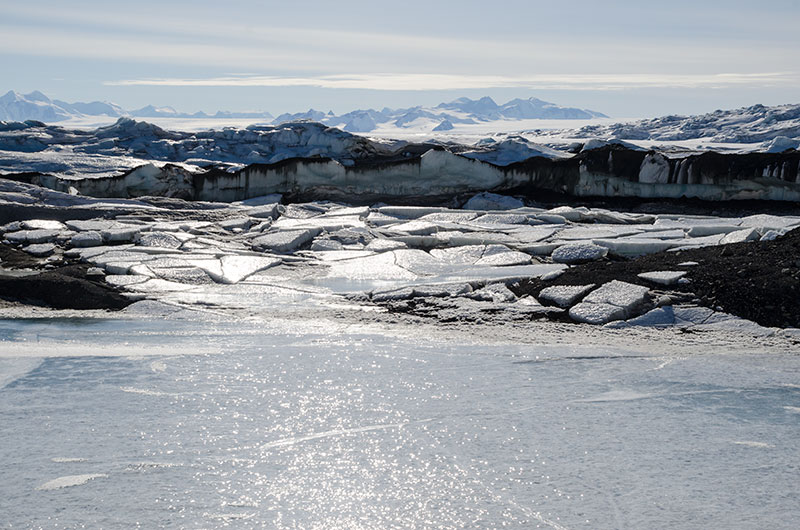 Partially drained lake within the ice-shelf moraine, showing stranded ice floes. |
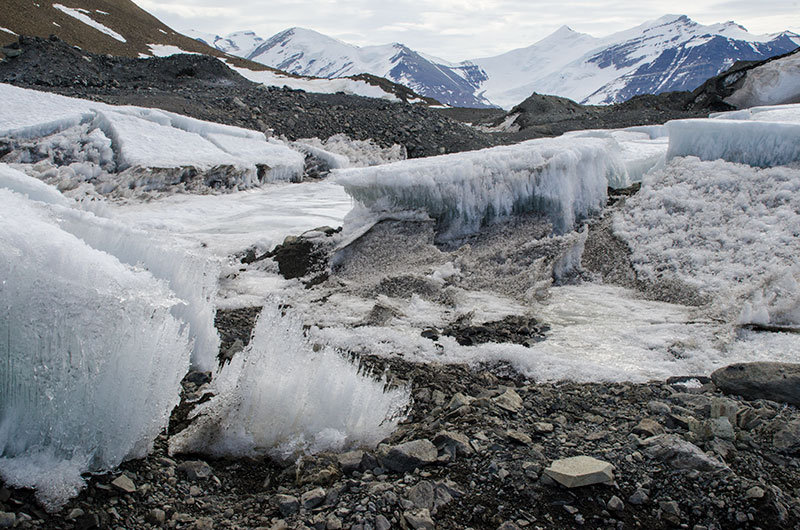 Lake floes stranded after partial lake drainage, showing candle ice crystals up to half a metre long. | 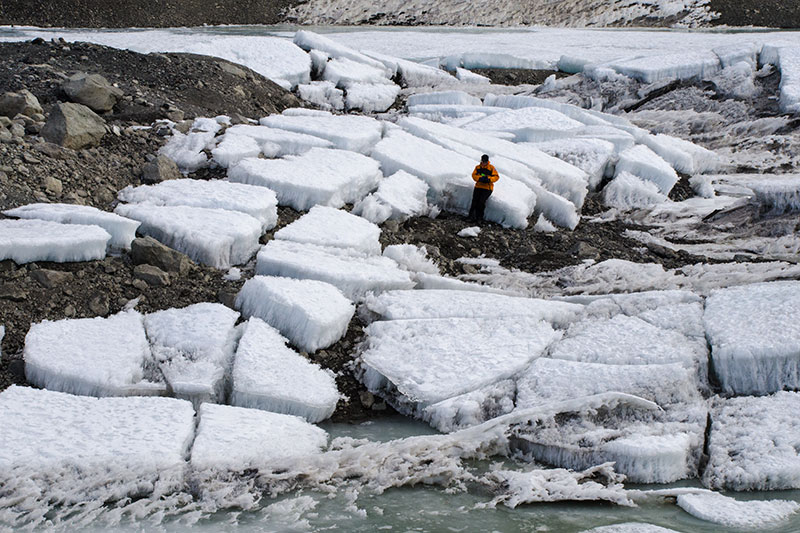 Looking down on jig-saw like pieces of fractured lake-ice floes. | 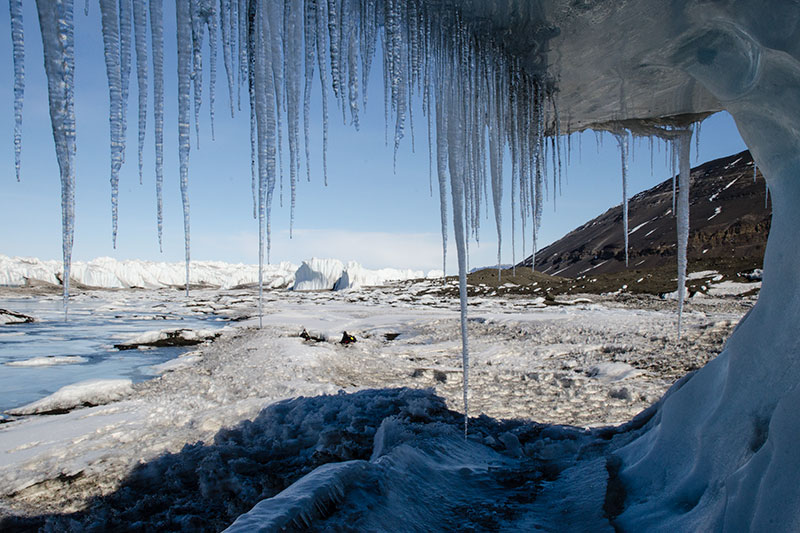 Drained supraglacial lake framed by icicles in a notch representing the former lake level, near Moutonnée Lake. | 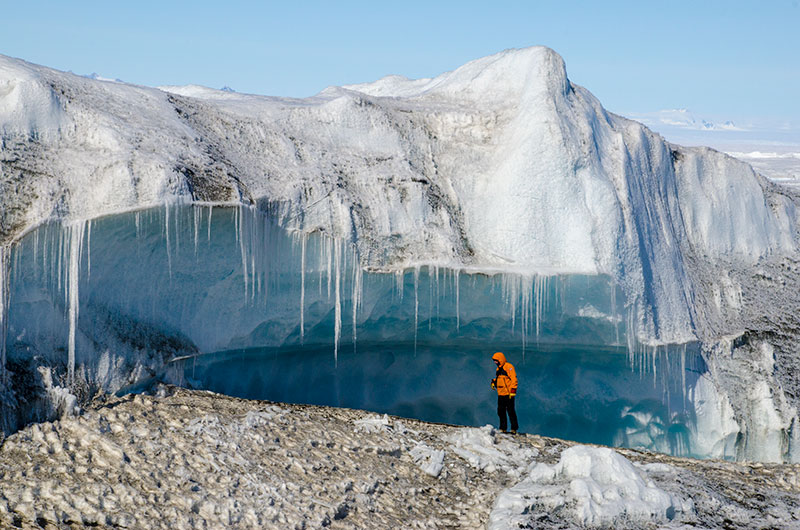 Ian Hey inside a large undercut notch representing the former level of the supraglacial lake. |